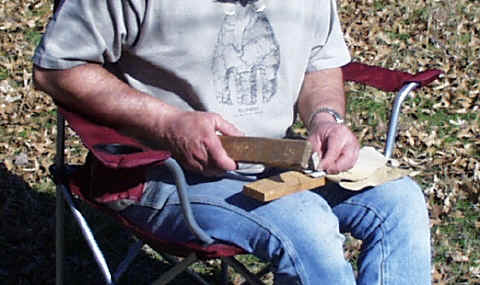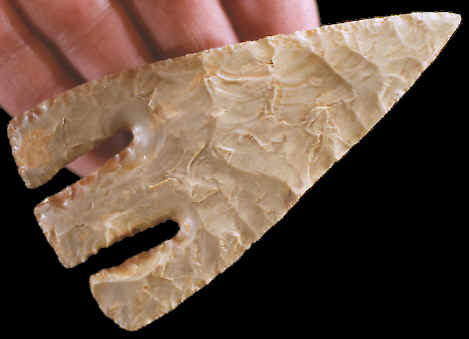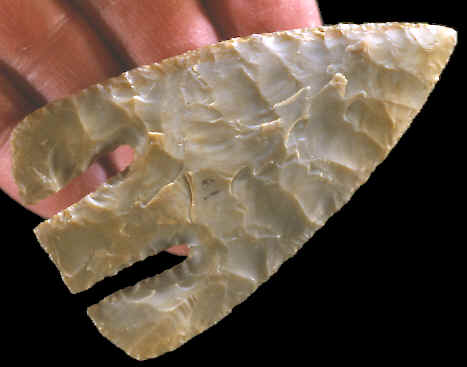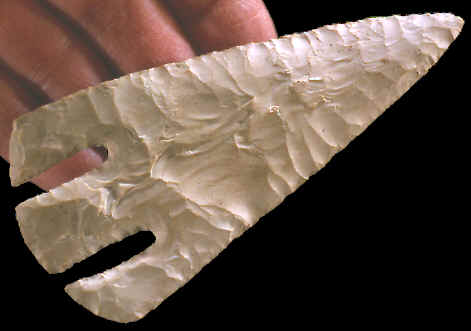|
|
|
In 1981 Bill Carroll showed Carey the first Andice-Bell-Calf Creek artifacts that he had ever seen. He also demonstrated his hand-held indirect percussion technique for notching them with a copper tool. Carey says that " from that time on I was hooked on notching, and had soon made my first Andice-Bell-Calf Creek replica." Carey says he was never skilled at making large thin bifaces but he says "I seemed to have a knack for indirect percussion flaking and leg-assisted pressure flaking using an Ishi-stick which are two techniques essential for making Andice-Bell-Calf Creek point replicas." |
|
|
The Gault site in Bell County, Texas has recently become famous for an extensive Clovis deposit found there. In fact some people believe it may be the largest Clovis site in the country. But, before this discovery was made the site was best known for its Andice-Bell deposits. It's estimated that perhaps as many as 3000 Andice-Bell points have been found there. Carey says that he was sought out by many collectors who were digging there and he had a unique opportunity to study their points. The Gault site has produced more Andice-Bell points than any other site in Texas. |
|
|
Carey says that the artifacts from the Gault site gave him the opportunity to "study the points from the site that were made available to me, developing and documenting attribute data to answer various questions about how they were made and used, and eventually accumulating data on more than 400 specimens from various parts of Texas." He says that "through this study, I have illustrated and made available data on more Andice-Bell points than all other researchers combined. This 20-year study led me to develop a tool kit and a technique for replicating these points." |
|
|
|
|
Complete examples of ancient Andice points are rare. Hundreds of broken ones have been found for every complete unresharpened example. Thousands of Andice/Bell points have been found on the Gault site near Jarrell, Texas. This site is considered the type site for these deep basal notched knife forms. Andice points were named after the nearby community of Andice, Texas in Williamson County. |
|
| CONTINUE ON TO PAGE four | |
|
"REFERENCES"
1985,
"Selected Preforms, Points, and Knives of the North American Indians,
Vol. I," Calf Creek, by Greg Perino, p.62. |
|



